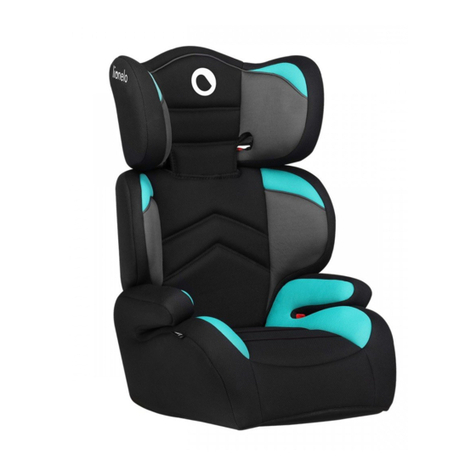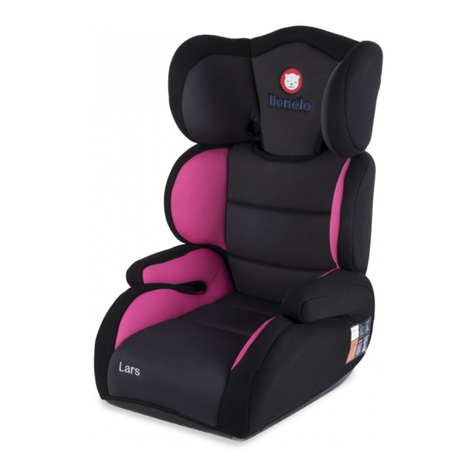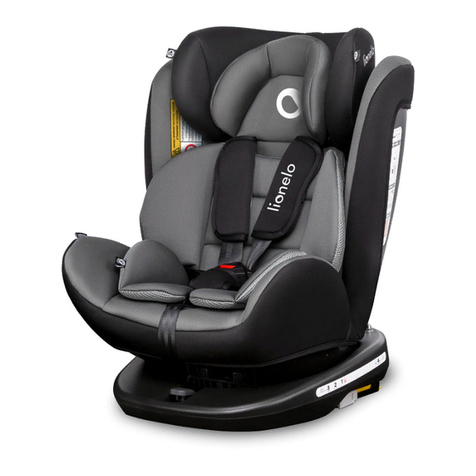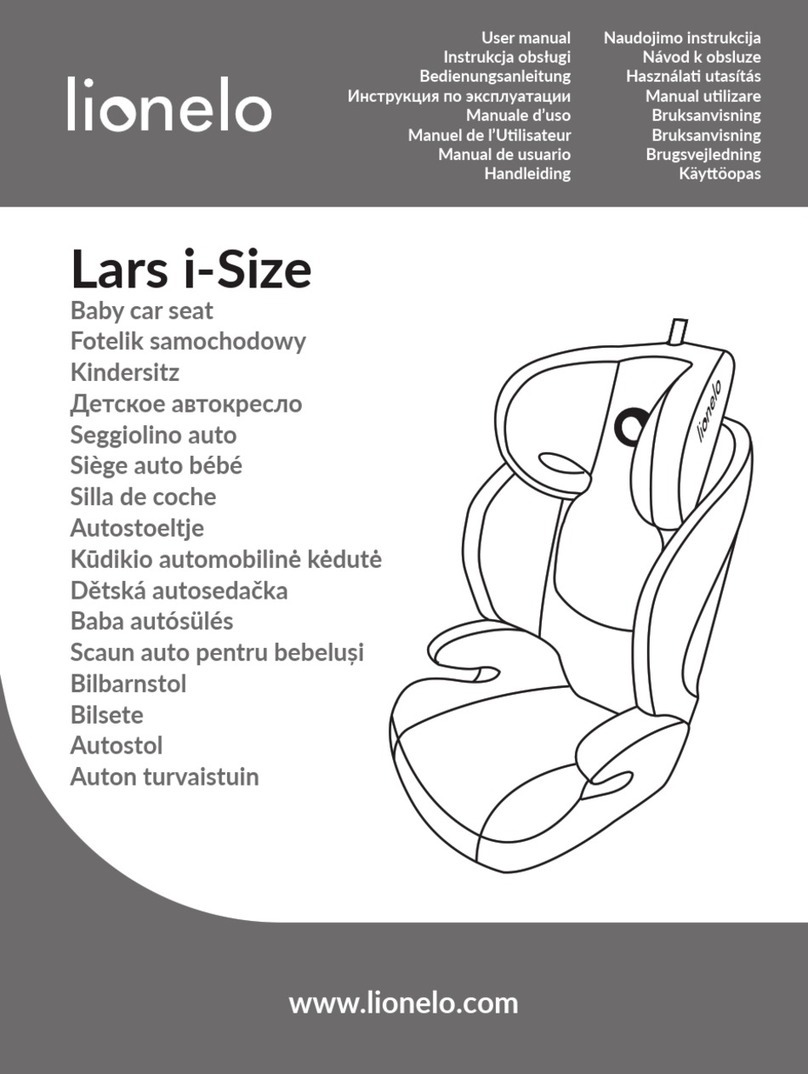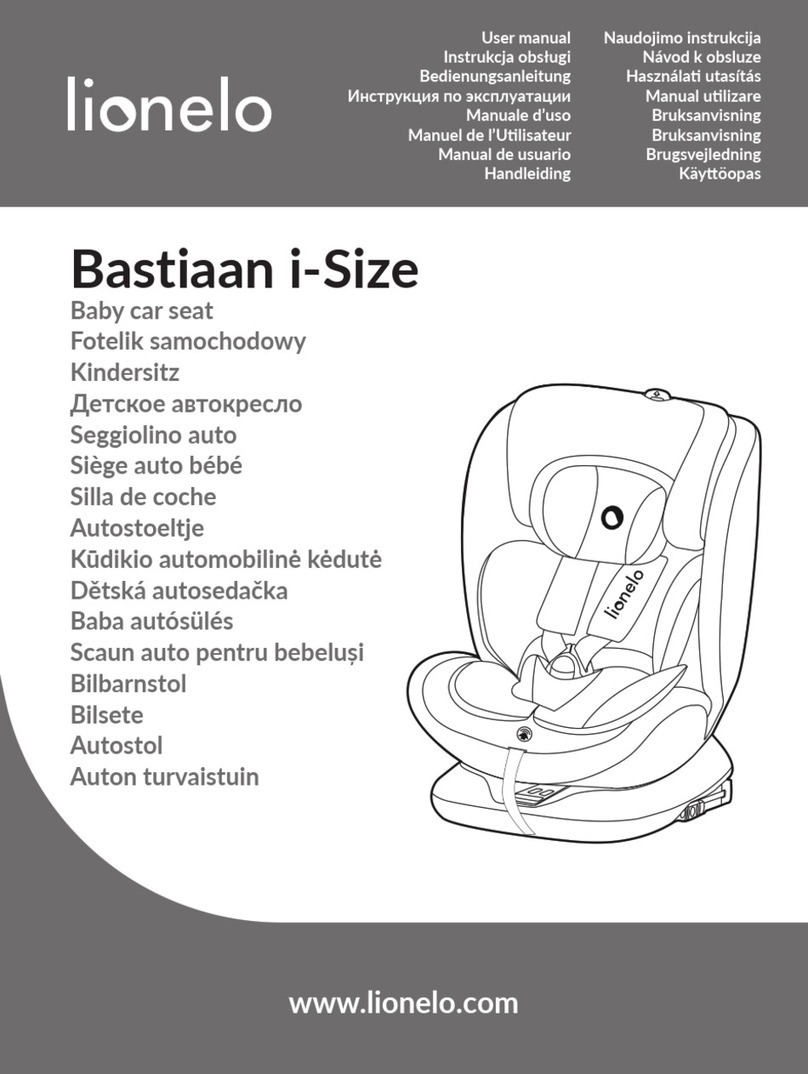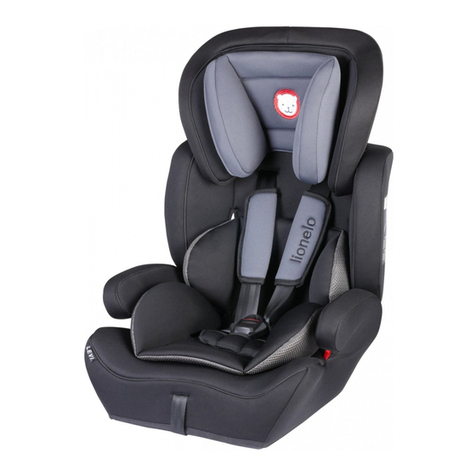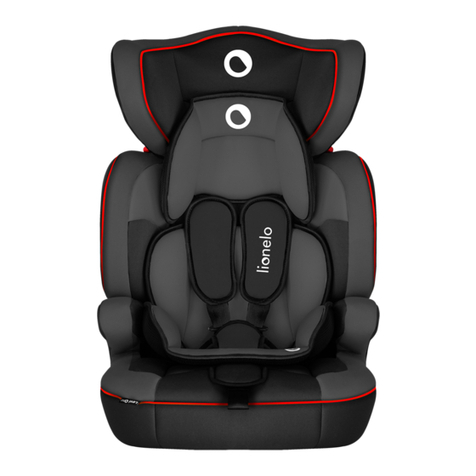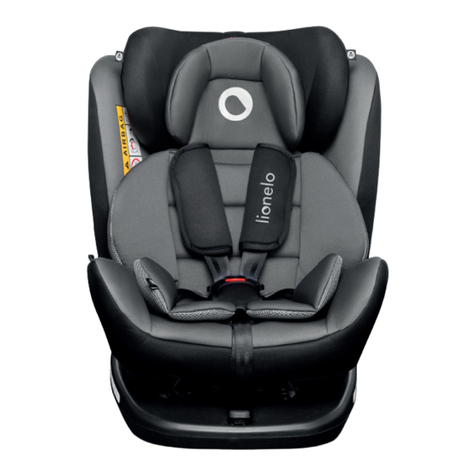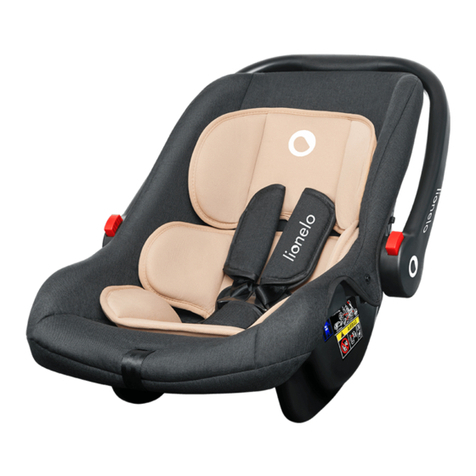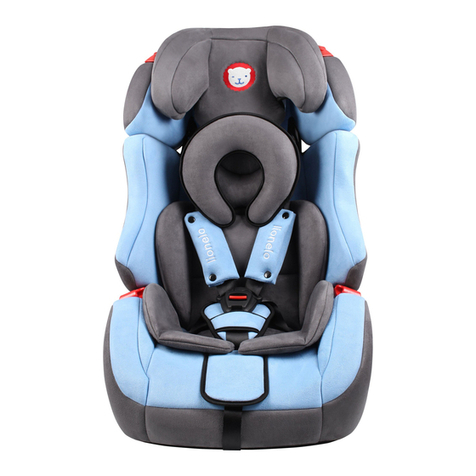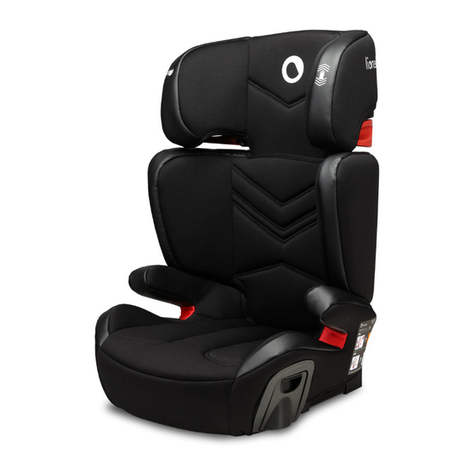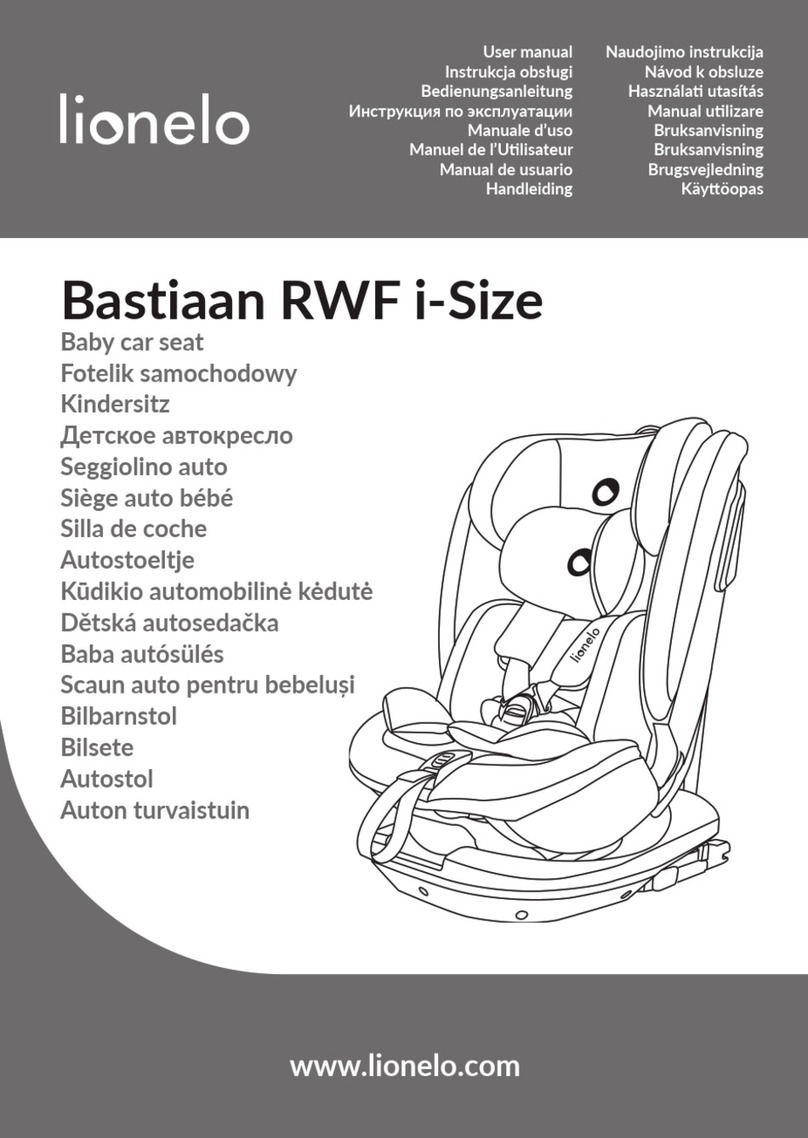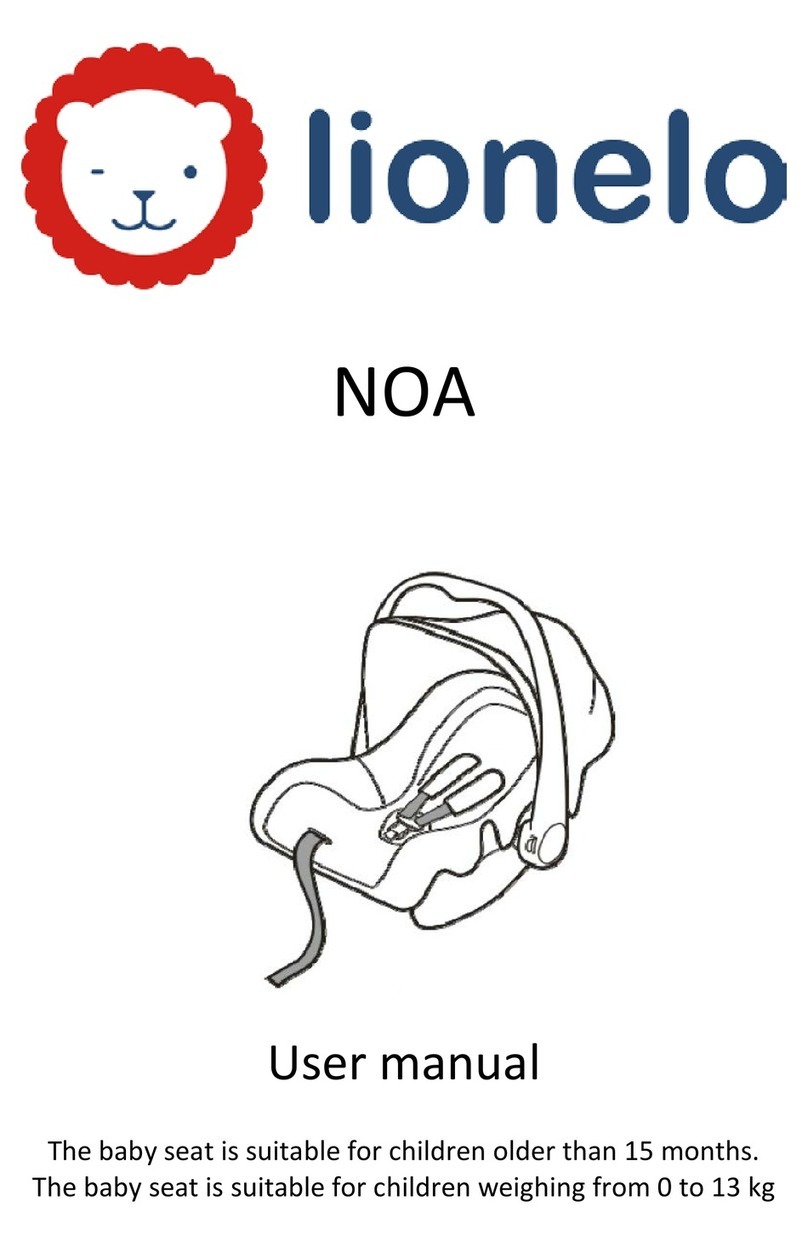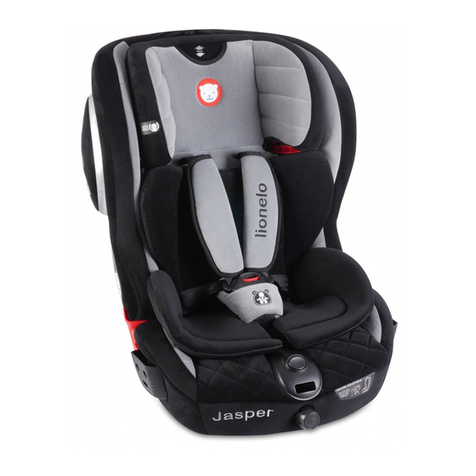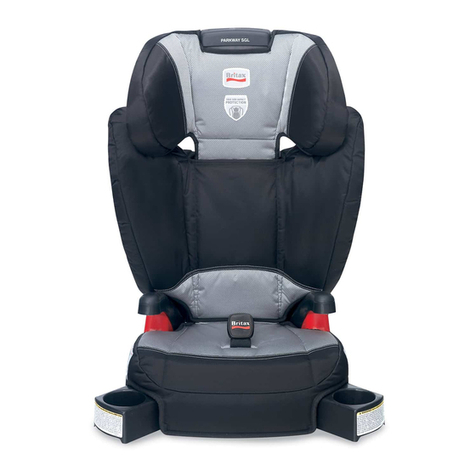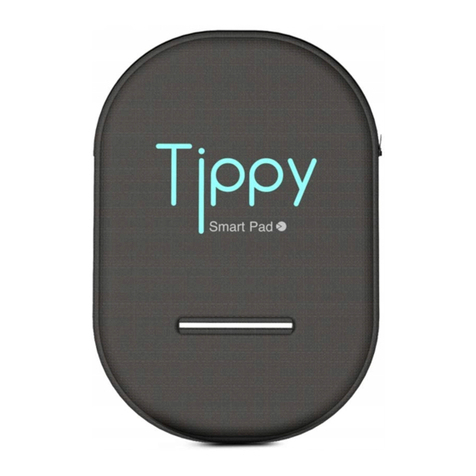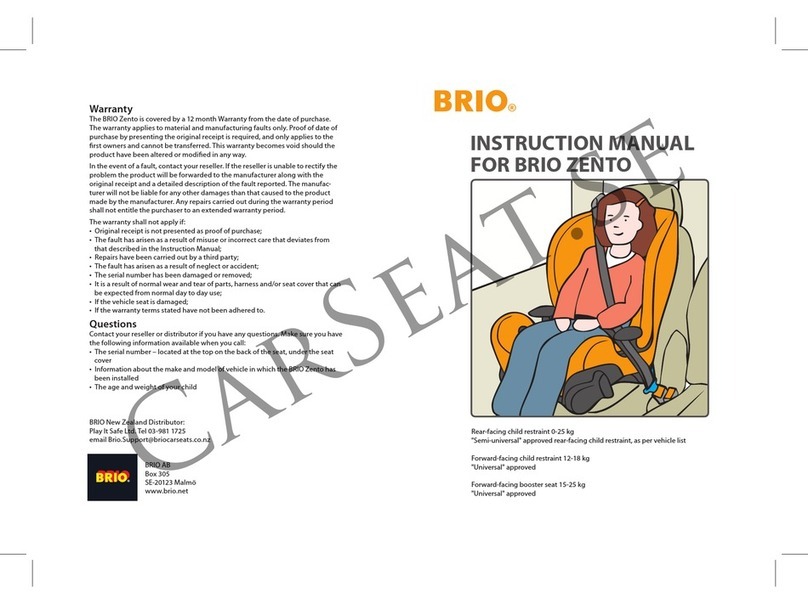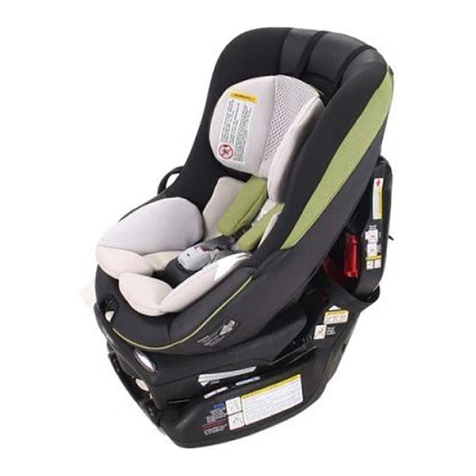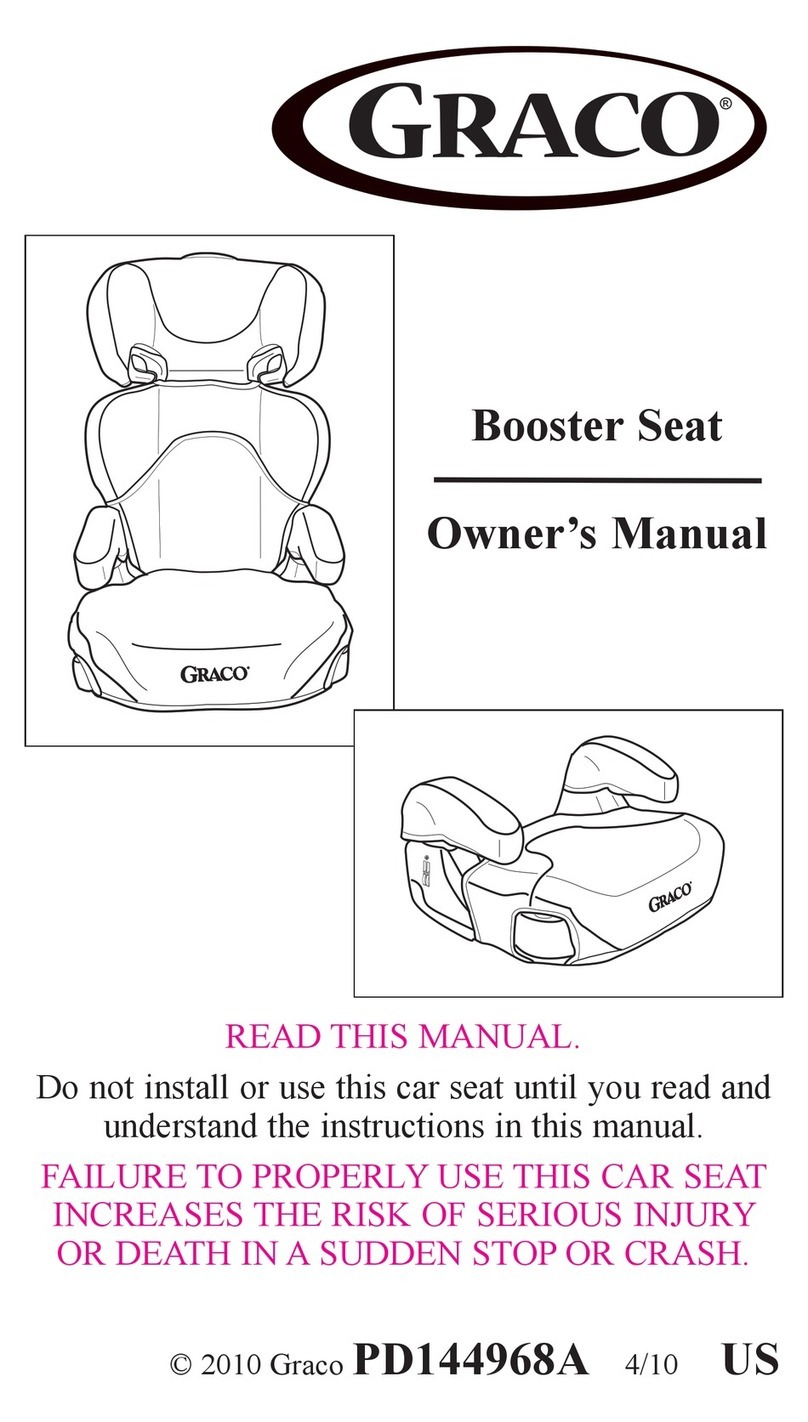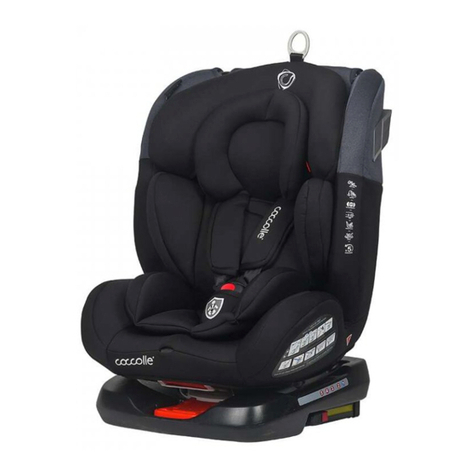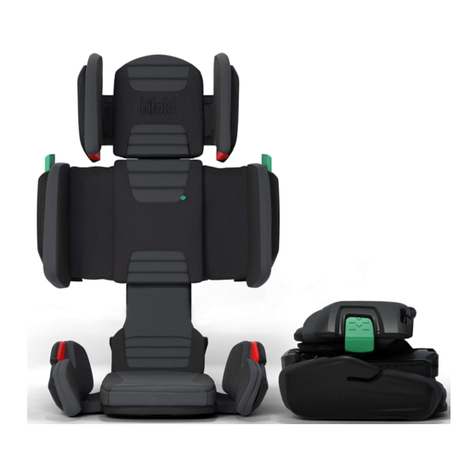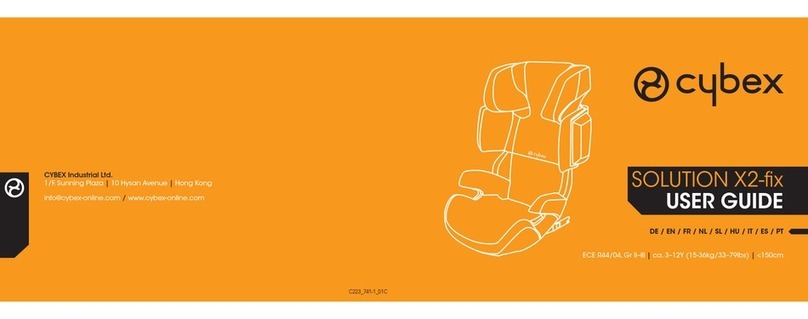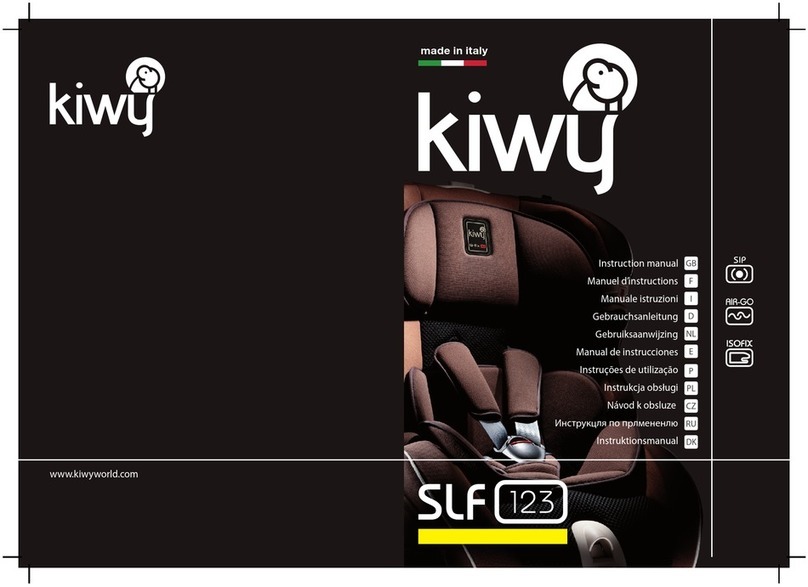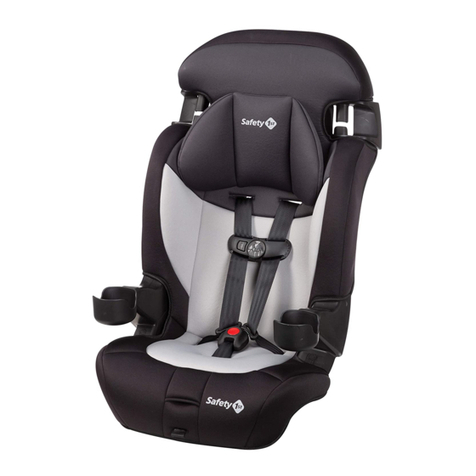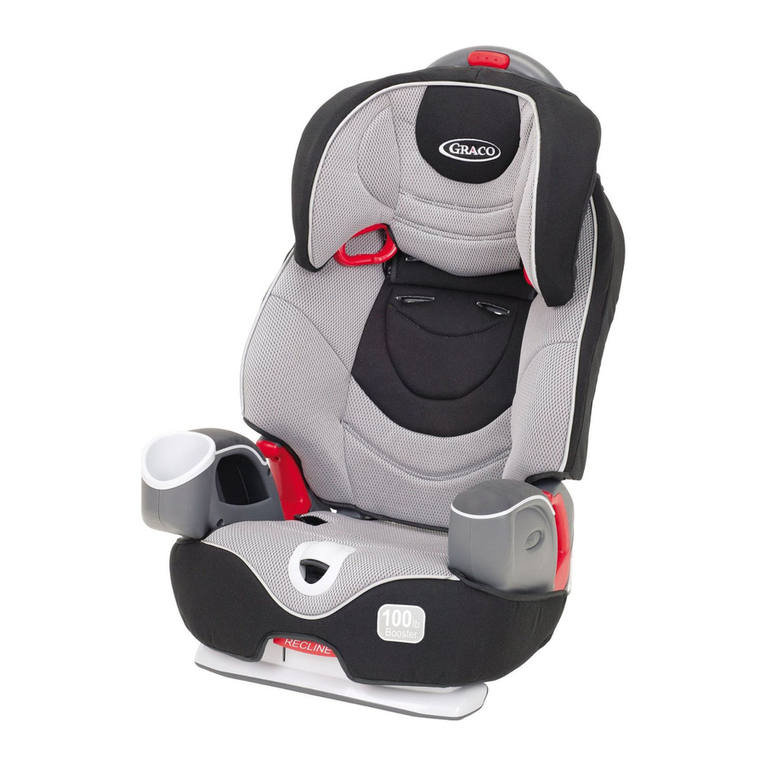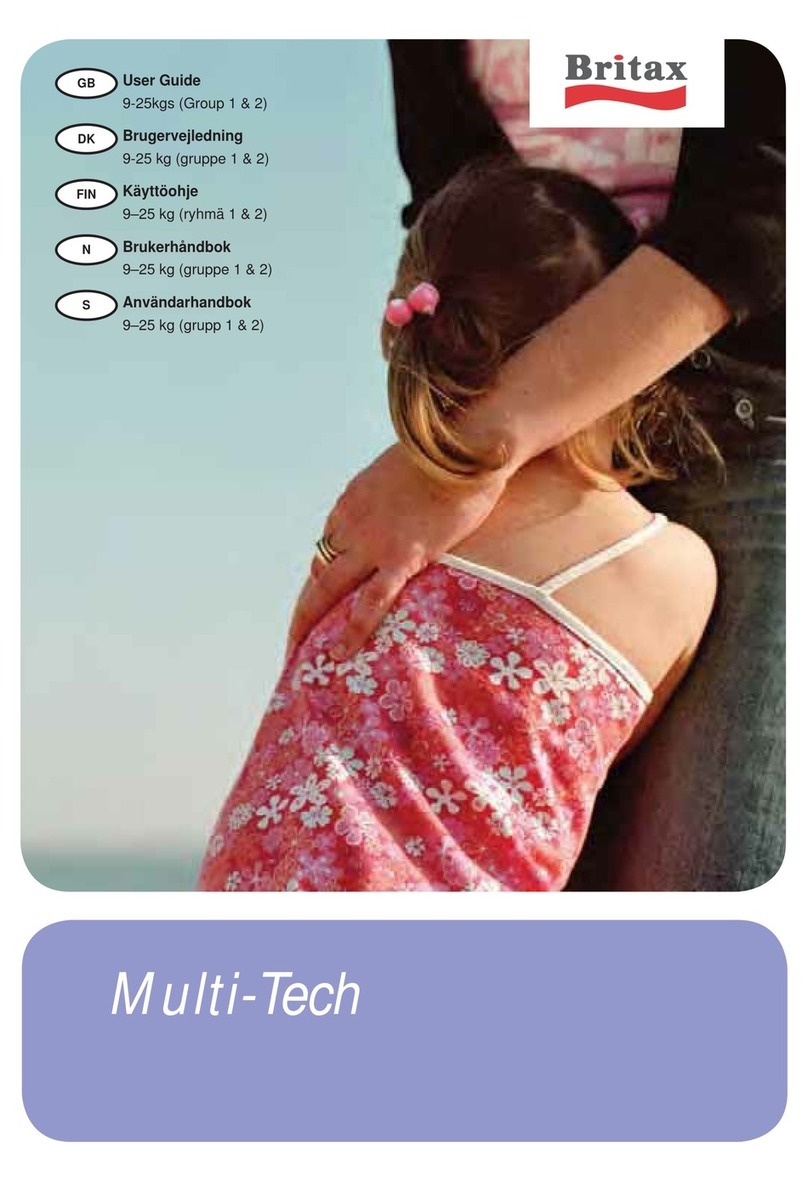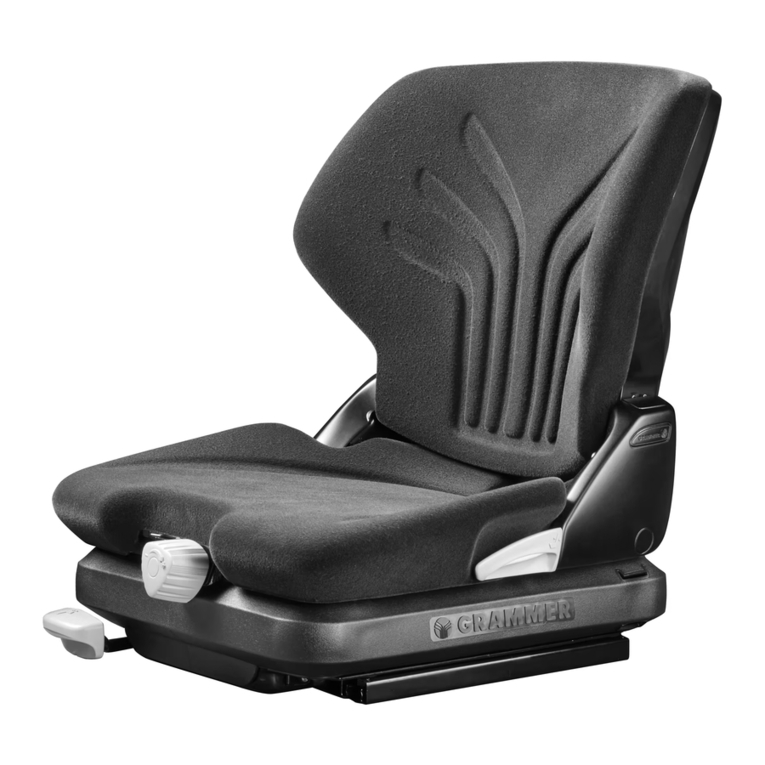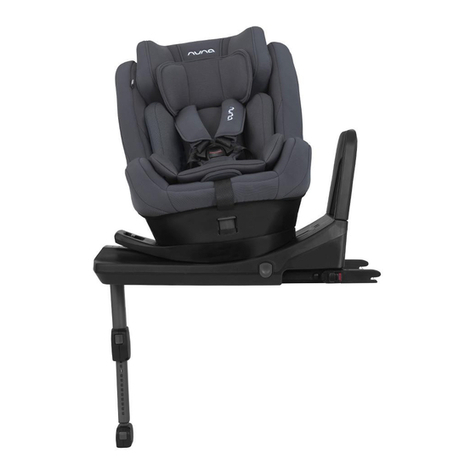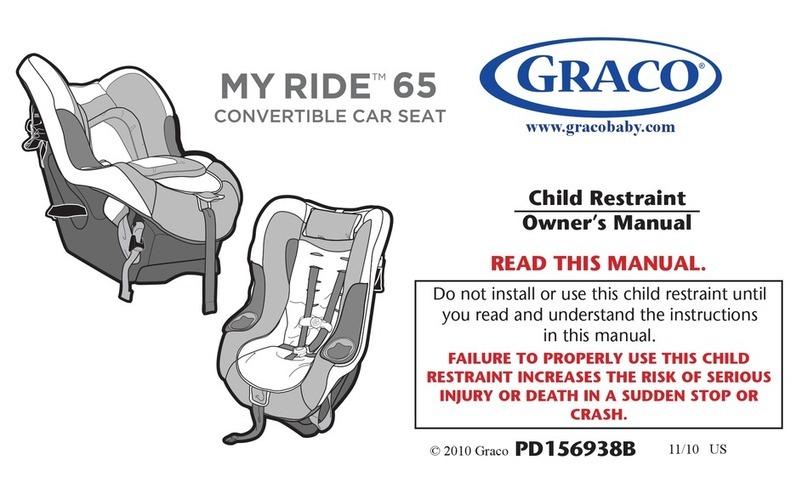
‑ 7 ‑ EN
EN
Informaon
The child restraint system is categorized as „universal” and „semi-universal”. It holds the
cercate of approval pursuant to the UN regulaons no. 44, series of amendments 04, for
general use in vehicles, and is suitable for installaon on most car seats.
A proper installaon is possible if the vehicle manufacturer has declared in the vehicle manual
that this vehicle supports installaon of the child restraint system in „universal” and „semi-
universal” category for this age group.
This child restraint system has been classied as „universal” in more demanding condions
when compared to previous designs which are not supplied with this informaon. Should
you have any doubts, please consult the manufacturer or retailer of the device.
Suitable for installaon only if type-approved vehicles are equipped with three-point seat
belts ed with a retractor that has been approved in accordance with UN Regulaon No.
16 or other equivalent standards.
Informaon on ISOFIX system:
1.
This is ISOFIX CHILD RESTRAINT SYSTEM. It has been granted the cercate of
approval in accordance with the UN regulaons no. 44, amendments series 44, for
general use in vehicles equipped with ISOFIX system.
2. It is suitable for vehicles with posions approved as ISOFIX posions (in accordance
with the vehicle manual), depending on the child safety seat and xing categories.
3. Weight group and ISOFIX size class to which the device is dedicated:
B1 for group I (9 – 18 kg) in a forward-facing posion.
When using for gorups II, III - „semi-universal” category
This child restraint system has been classied as „semi-universal” and is t for installaon on
seats in the following cars (full list at the end of the user manual):
Car Front Back
(Model) External/Central
NO/NO
External/Central
YES/NO
This device may be suitable for installaon also on seats of other models of the car. In case
of doubts, please consult the manufacturer or retailer of the device.
